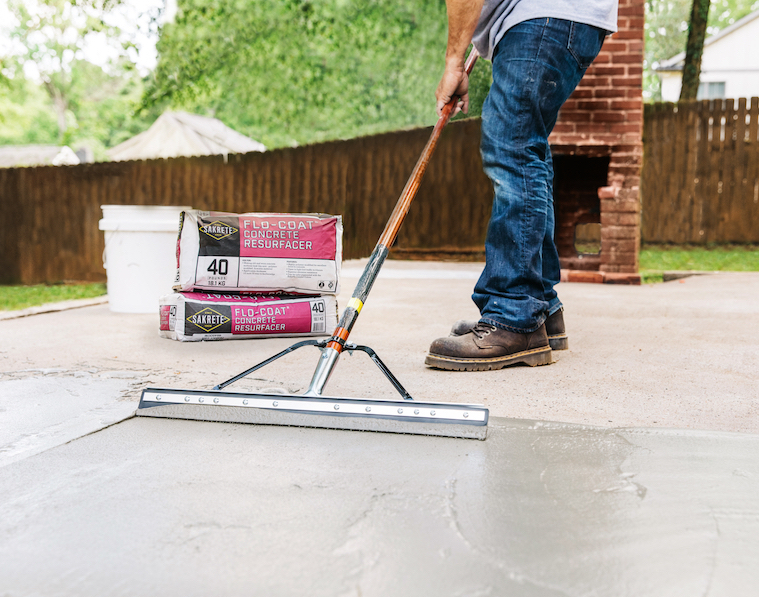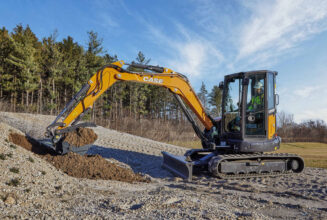Five Tips for Maintaining Concrete, and Client Relationships

By Mike Boenisch
Concrete is a durable material and many landscape contractors and clients view it as a maintenance-free product, often considering the job as final and complete once the concrete has cured. But the truth is that no exterior material lasts forever without occasional maintenance.
As a landscape contractor, you have likely used concrete for a walkway, patio or small wall or edging. In that experience, you have learned that there are two types of concrete: concrete that has cracked or concrete that is going to crack. Over time, concrete surfaces will show signs of wear and tear. These are often aesthetic in nature, rather than functional, however they provide the opportunity to offer maintenance services to extend the concrete’s life. Here are five simple tips to drive new business by providing maintenance for existing concrete.
- Keep concrete clean and sealed.
It is a common misconception that concrete is a maintenance-free product and that it simply needs an occasional pressure wash. The reality is that a number of elements can break down concrete over time including weather, freeze/thaw cycles, acids, alkali, salt and harsh chemicals.
Sealers are the easiest way to protect concrete against the elements. However, users often forget to keep these sealers up to date on their maintenance schedules, as most sealers call for reapplication every six to 12 months. This presents an opportunity for landscape contractors to drum up additional business: follow up with clients based on the project’s sealer maintenance schedule to encourage reapplication. This not only will keep concrete in top shape, but also creates a connection and selling opportunity from a business standpoint. Be sure to note that sealing can cause slippery surfaces when wet.
- Repair chips and cracks with a resurfacer.
A resurfacing product is the most helpful product a landscape contractor can use to repair concrete. With proper preparation, resurfacers can simply be applied on top an existing concrete surface in very thin layers. The result is a fresh, even surface that will extend the aesthetic life of the material.
Resurfacers are ideal for pathways, slabs and walls, or simply anywhere concrete may need a touch up. Concrete repair materials are also great for corner repairs, which are commonly created by automobiles or equipment.
- Be aware of materials that are harmful to concrete.
De-icing salts used in intense wintery conditions, such as in northern states, can cause significant damage to concrete. But other regions are at risk as well, as any chemical containing chlorides – including sodium chloride, potassium chloride, or calcium chloride – presents a danger to concrete as well. These can be found in “safe de-icing chemicals,” fertilizer, ocean water, marine air and more. All of these elements are mildly acidic, and attack the bonds that hold concrete together.
In addition to these harsh elements, heavy machinery, corrosive fluids or simply constant use can wear concrete down. High-trafficked areas should be sealed to prevent damage. If the area is already damaged, consider a resurfacer to repair it.
- Determine the ideal time to reseal.
Following the sealer’s application schedule is a positive step that can be made to protect concrete. On top of that, contractors can help clients identify the ideal time to seal their concrete. For example, spring is a popular time for renovations, which can bring various contractors and technicians to a home, often with heavy vehicles and equipment. If this heavy traffic is identified at a home during a job, address sealing with the client, suggesting that you return once all work is complete to seal and protect the concrete.
Another ideal time to begin a concrete resealing project is when homeowners begin the process of preparing their homes for winter. As homeowners winterize their gardens and conduct clean up, this is a great opportunity to reseal and prepare concrete for winter’s harsh conditions.
It is also important to note that tinting concrete sealer can give the concrete a unique color that is often appreciated by homeowners, adding another creative element to your work.
- Perform a simple sealer test.
There may be times when you are called to a project that has a concrete installation, but the homeowner is unsure if or when a sealer was last applied. Fortunately, there is a simple test that can be performed to test if a sealer is present: drop a small amount of water onto spots on the concrete surface. If the water beads up and the color of the concrete does not change, that means it is sealed. If the concrete absorbs the water and darkens, no sealer is present. This will help contractors and clients determine if a sealer should be applied to reduce water’s effects on concrete.
Many homeowners are unaware of concrete’s ongoing maintenance needs. By circling back with clients, building relationships through transparency about pricing, timing and expectations, contractors may have additional opportunities for additional services and jobs.
Follow up with clients every six to nine months via e-mail or direct mailers to remind them to check for cracks, sealer performance or any other resurfacing needs. When it comes to concrete, minor ongoing maintenance can go a long way to extending both the aesthetic appeal and functional performance of concrete. By positioning yourself as the expert in both concrete installation and maintenance, one-time clients will call again for repeat business.
Mike Boenisch is the manager of technical services at Sakrete of North America at Oldcastle. Sakrete was founded in 1936 as North America’s original dry cement mix brand, and is a leader in concrete and concrete-related products, and other top-quality building products.




